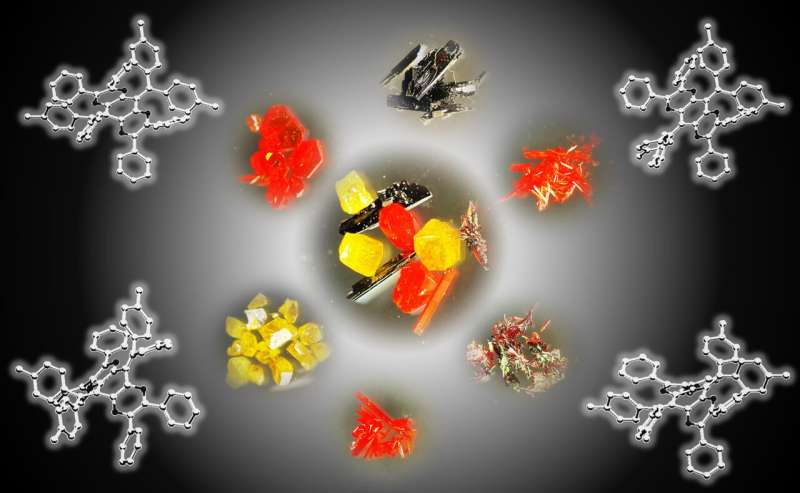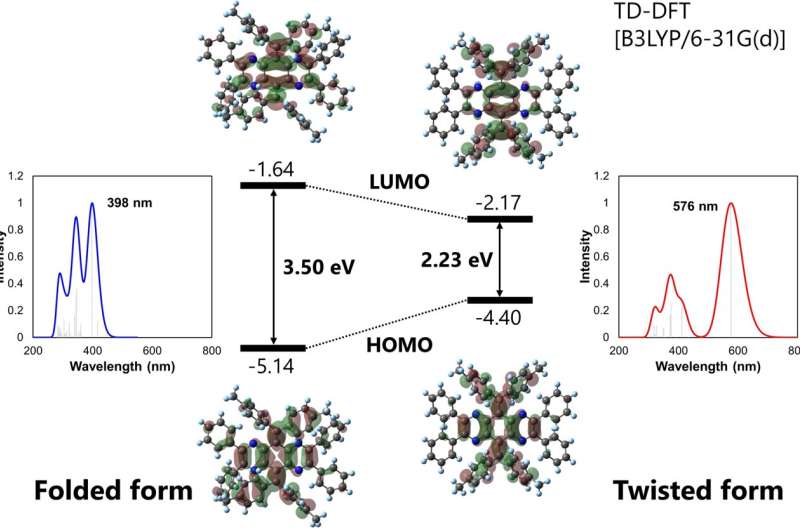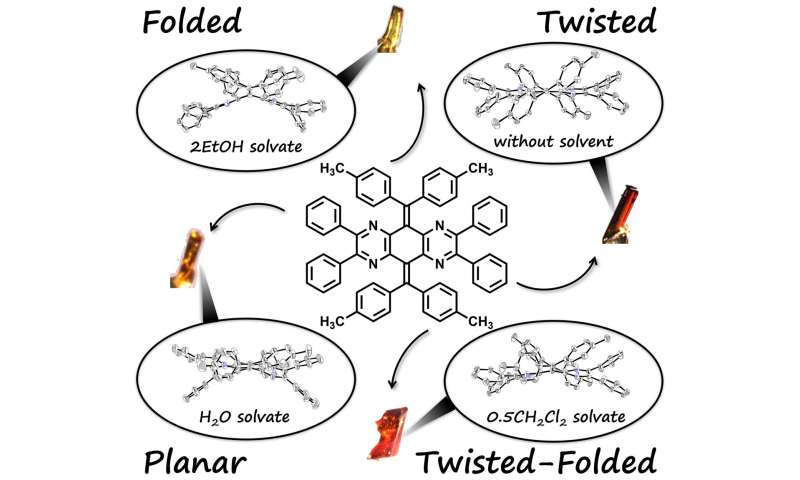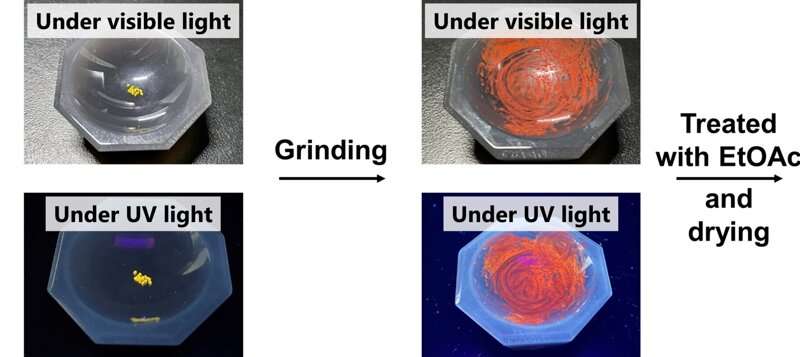This article has been reviewed according to Science X's editorial process and policies. Editors have highlighted the following attributes while ensuring the content's credibility:
fact-checked
trusted source
proofread
Developing tunable molecular switches from organic compounds

Newly synthesized organic molecules can be tuned to emit different colors depending on their molecular structures in crystal form.
Molecular switches are chemicals with molecular structures that can be shifted between two or more stable configurations in response to changes in their environment. They are of great interest in the development of molecular computers, molecular machines and drug delivery systems. Compounds with conformational isomers—identical molecular formulas but different molecular structures—can make very effective molecular switches.
Researchers at Hokkaido University and Kyushu University have developed a technique to synthesize potential molecular switches from anthraquinodimethanes (AQDs), a group of overcrowded organic molecules. The study, led by Associate Professor Yusuke Ishigaki at Hokkaido University and Associate Professor Toshikazu Ono at Kyushu University, was published in the journal Materials Chemistry Frontiers.
"AQDs are a type of overcrowded ethylene, molecules with carbon-carbon double bonds surrounded by large chemical groups," explains Ono. "They have two common isomers, the folded and twisted forms. They are especially interesting as molecular switches, as their sterically hindered double bond can provide isomers absorbing and emitting different wavelengths of light."

AQDs generally adopt the most stable folded or twisted form, making it difficult to isolate pure samples of any other isomer to study its properties. The researchers surmounted this obstacle by designing flexible AQD derivatives that can more easily and stably form different isomers.
The synthesized derivatives were not only able to stably form twisted and folded isomers, but also other isomeric forms, when recrystallized in different solvents. The researchers performed detailed analysis of the derivatives to fully understand their properties.
In a crystalline state, each of these isomers absorbs and emits distinct frequencies of light, which is due to the differences in the distribution of electrons in the isomer molecules. Interestingly, the light absorption and emission changed when the crystals were ground into amorphous solid, and following treatment with appropriate solvents can produce original or other crystals with a variety of colors.
-

The methyl derivative of the new compound has four different isomers, with different crystal structures each. Credit: Materials Chemistry Frontiers (2023). DOI: 10.1039/D2QM01199A -

When ground into amorphous solid and treated with appropriate solvents the light absorption and emission changes. Credit: Materials Chemistry Frontiers (2023). DOI: 10.1039/D2QM01199A
"This work is the first report on the isolation of multiple isomeric forms of AQD," Ishigaki concluded. "Their absorption and emission of different light frequencies, and more importantly, the ability to modulate the absorption and emission by external stimuli, make these compounds excellent candidates for the development of molecular switches."
More information: Kazuma Sugawara et al, Exceptionally flexible quinodimethanes with multiple conformations: polymorph-dependent colour tone and emission of crystals, Materials Chemistry Frontiers (2023). DOI: 10.1039/D2QM01199A
Provided by Hokkaido University




















